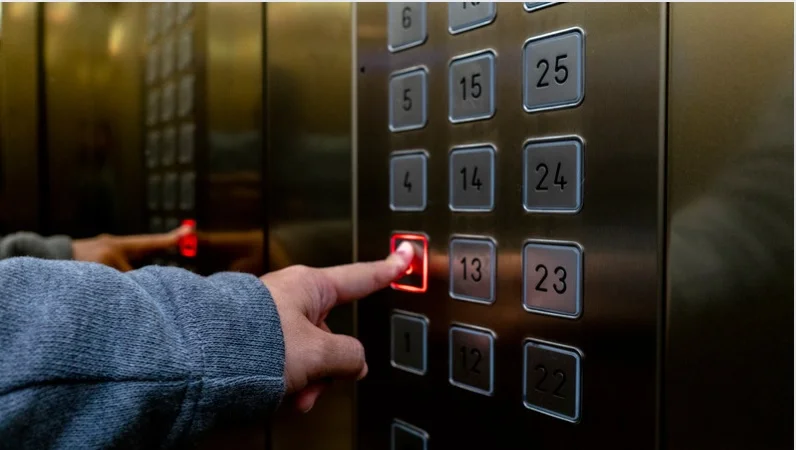Elevators have become indispensable in modern architecture, seamlessly transporting us through the vertical spaces of towering buildings. With the elevator industry projected to reach a staggering $99.5 billion by 2032, it’s evident that these vertical transportation systems are crucial to urban development. Among the various components that contribute to the smooth operation of elevators, the elevator button stands out as a critical yet often overlooked element. This article delves into the evolution, design, and functionality of elevator buttons, revealing their significant role in enhancing user experience and efficiency.
Historical Perspective: From Levers to Push-Buttons
The concept of home elevators dates back thousands of years, with early versions utilizing manual labor or animal power to lift goods and people. However, it wasn’t until the mid-19th century that the invention of push-button technology revolutionized vertical transportation. Before this innovation, elevators relied on a system of levers and operators who manually controlled the lift’s movements. As buildings grew taller and elevator usage increased, a more efficient and user-friendly method was necessary. The advent of the push-button system marked a significant milestone, transforming elevators into autonomous machines that could be easily operated by passengers.
The Modern Elevator Button: Design and Materials
Today’s elevator buttons are marvels of engineering, designed to be robust, reliable, and user-friendly. The evolution of materials and technology has led to the development of buttons that can withstand constant use and harsh conditions. Most modern elevator buttons are made from durable materials like stainless steel, polycarbonate, and high-impact plastics. These materials ensure that the buttons are not only resistant to wear and tear but also easy to clean and maintain.
Furthermore, the incorporation of IP67 and IP68 ratings has enhanced the resilience of elevator buttons. These ratings indicate the level of protection against dust and water, ensuring that the buttons function reliably even in challenging environments. For instance, IP67-rated buttons are dust-tight and can withstand immersion in water up to a depth of one meter for 30 minutes, while IP68-rated buttons offer even higher levels of protection.
Types of Elevator Buttons: From Mechanical to Touch-Sensitive
Elevator buttons have evolved from simple mechanical switches to advanced touch-sensitive panels. Each type has its unique working principle and benefits:
- Mechanical Buttons: These traditional buttons use physical contact to complete an electrical circuit when pressed. They provide tactile feedback, making it clear to the user that their input has been registered. Mechanical buttons are known for their durability and reliability.
- Piezo Switches: Piezoelectric technology leverages the piezoelectric effect, where pressure applied to a piezoelectric material generates an electrical charge. Piezo switches are extremely robust, with no moving parts, making them ideal for environments requiring high durability and minimal maintenance.
- Capacitive Touch Panels: These buttons use the principle of capacitance to detect the presence of a finger. When a finger approaches the touch-sensitive surface, it alters the local electric field, triggering the desired action. Capacitive touch panels are sleek and modern, often found in high-end elevators.
- Proximity Sensors: These sensors detect the presence of an object or finger near the button without physical contact. Proximity sensors are particularly useful in hygienic environments, reducing the need for physical contact and thus the spread of germs.

The User Experience: Ergonomics and Accessibility
The design of elevator buttons significantly impacts the user experience. Ergonomics play a crucial role in ensuring that buttons are easily accessible and comfortable to use. Buttons are typically positioned at a height that accommodates the average user, and the size and spacing are designed to facilitate easy pressing.
In addition to ergonomics, accessibility is a key consideration in elevator button design. Buttons must be usable by people with disabilities, including those with visual or motor impairments. Features like Braille labels, audible feedback, and tactile markers help ensure that elevators are accessible to all users. The integration of voice-activated controls and smartphone apps further enhances accessibility, allowing users to operate elevators without physically pressing buttons.
The Working Principle: How Elevator Buttons Operate
When a user selects a floor by pressing the corresponding button on the elevator control panel, a series of events is set into motion. Here’s a detailed look at the working principle of elevator buttons:
- Input Detection: The button press is detected either mechanically or through electronic sensors. In mechanical buttons, pressing the button completes an electrical circuit. In capacitive or proximity sensors, the presence of a finger alters the electric field or is detected by infrared light.
- Signal Transmission: Once the input is detected, an electrical signal is sent to the elevator control system. This signal indicates the desired floor or direction of travel.
- Control System Processing: The elevator’s control system processes the signal and schedules the lift’s movement. Modern control systems are highly sophisticated, optimizing travel paths to reduce waiting times and improve efficiency.
- Feedback to User: Most elevator buttons provide feedback to the user, confirming that the input has been registered. This feedback can be visual (illuminating the button), tactile (a slight vibration or click), or auditory (a beep or chime).
- Movement Initiation: The control system sends signals to the elevator’s drive mechanism, initiating the movement to the selected floor. The elevator car moves smoothly and stops precisely at the desired floor, thanks to advanced motor control and braking systems.
Conclusion
As technology continues to advance, the future of elevator buttons promises even greater innovations. Emerging technologies such as gesture recognition, voice control, and biometric authentication are likely to transform how we interact with elevators. These innovations will not only enhance convenience but also improve security and accessibility.
In conclusion, elevator buttons, though small, are integral to the functionality and user experience of elevators. From their historical evolution to modern advancements in design and technology, elevator buttons exemplify the intersection of engineering and user-centric design. As we continue to build taller and more complex structures, the humble elevator button will remain a critical component, ensuring smooth, efficient, and enjoyable vertical transportation.









